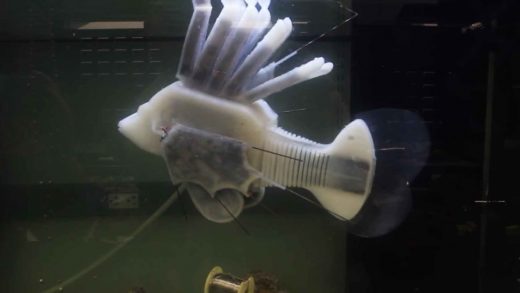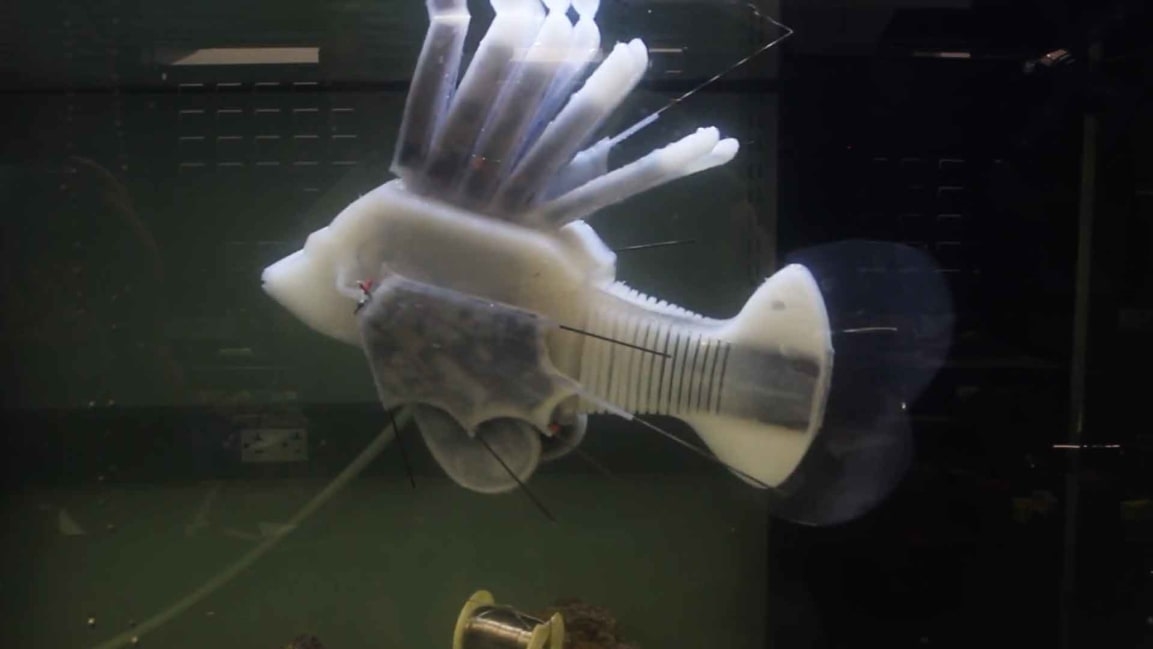This robot fish has synthetic blood and a circulatory system
Researchers from Cornell University and the University of Pennsylvania have created a lifelike robotic lionfish with a circulatory system, reports Gizmodo. That circulatory system enables the fish to circulate synthetic blood throughout its body.
This circulation of synthetic blood is a major step forward when it comes to robotics because it more accurately mimics how biological animals function. In biological animals, oftentimes parts and systems will carry out multiple tasks. For example, the ear allows an animal to hear but to also retain its balance. Robots currently require a different component for every task. These necessary individual components add to the bulk and power requirements of robots.
Until now, that is. That’s because the synthetic circulatory system that moves the lionfish’s “blood” (an electrolyte solution) around its body both stores the energy to power the robotic fish and helps it to move its pectoral fins, which lets it propel itself through the water. As James Pikul, one of the researchers on the project explains to Gizmodo:
In our synthetic vascular system, the fluid stores chemical energy which we can use to power the fish robot. As the fluid is pumped through the fish robot, the moving fluid also causes the robot to move. The vascular system, therefore, is multifunctional. It is these multiple functions that allow the robot to maintain its dexterity while also having a long operational time.
So could this tech be used to one day create oceans of lifelike robotic fish? Perhaps. But the robot lionfish has more practical purposes. In the future, synthetic circulatory systems like the one in the lionfish could be used in electric vehicles and airplanes to make them more energy efficient. You can check out the robotic lionfish in action below.
Fast Company , Read Full Story
(49)



